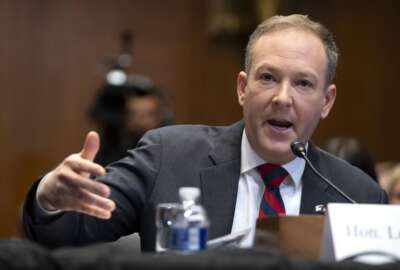IT reform bill overcomes toughest hurdle on path to become law
The House and Senate Armed Services committee members agreed to keep a pared down version of the Federal IT Acquisition Reform Act in the final National Defense...
The first major reform bill for federal information technology in more than a decade has made it through its toughest hurdle — the National Defense Authorization bill.
House and Senate Armed Services committee members agreed to keep a pared down version of the Federal IT Acquisition Reform Act in the final NDAA bill.
While the full House and Senate chambers still need to approve it, and President Barack Obama needs to sign it, FITARA is closer than ever to becoming law.
“I think the core of the legislation and the reforms that we had in mind are absolutely the original language of the Issa-Connolly bill in this version of FITARA in the NDAA, and I’m very, very happy and gratified,” said Rep. Gerry Connolly (D-Va.), in an interview with Federal News Radio Wednesday. “I really believe this reform legislation will make a difference and save taxpayers a lot of money.”
The provision in the NDAA applies only to civilian agencies and gives chief information officers specific and increased authorities and responsibilities over IT investments.
FITARA calls for agency heads to ensure CIOs have a “significant role in the decision processes for all annual and multi-year planning, programming, budgeting and execution decisions … related to IT,” and the “management, governance and oversight processes related to IT.”
Civilian agency CIOs also must approve the IT budget request from their agency before sending it to the Office of Management and Budget, approve any contract for technology products or services and sign-off on any request to reprogram funds for IT projects.
CIOs also must “certify that IT investments are adequately implementing incremental development” as defined by OMB.
“I think the empowerment of CIOs and streamlining of their authorities is a very important reform. It’s practical, but it will make a big difference in the 24 federal agencies at least,” Connolly said.
One other major change in FITARA is the departmental CIO now will approve the appointment of any bureau or organizational level CIO. Under the Issa-Connolly bill, each agency only would have one CIO, but the negotiators reduced that requirement.
“Each year, the federal government spends $80 billion on federal IT systems, yet much of that is wasted by cost overruns, long delays, and outdated programs,” said Rep. Darrell Issa (R-Calif.), chairman of the Oversight and Government Reform Committee and co-author of the bill, in a statement. “FITARA will streamline authority, increase accountability, and improve the decision making process for federal IT acquisition. By enacting these necessary reforms, we will cut waste and improve efficiency for IT systems across the federal government.”
As for DoD, the bill makes a few major changes. First, the deputy chief management officer will change to the undersecretary of Defense for business management and information starting Feb. 1, 2017. Second, the bill also merges the DoD CIO and performance improvement officer into this new undersecretary position.
In addition to the CIO authorities, the NDAA includes FITARA provisions codifying the IT Dashboard, and requiring OMB to issue guidance to standardize the data and reporting formats for major IT projects.
FITARA also includes a provision to codify a similar initiative to TechStat where risky IT projects are measured and mitigated by a joint agency and OMB team. The NDAA also includes a provision to require a similar program to PortfolioStat to look across the agency for opportunities to reduce redundant programs, to move to shared services and to identify potential cost savings.
Connolly said his data center consolidation provision and the call for agile or modular contracting also are significant parts of the bill.
Finally, FITARA also included the requirement for OMB to develop an IT acquisition cadre, similar to the Digital Services office, and the Office of Personnel Management to create a career path for IT program managers, the approval of direct hire authority, and testing out innovative approaches to IT acquisition workforce development.
The White House has yet to signal its support for FITARA, but Connolly didn’t think it would be a reason for Obama to veto the NDAA.
“OMB traditionally has taken the position on almost all legislation that if they didn’t think it up, it can’t be really that worthwhile,” Connolly said. “So they haven’t been a hindrance, but they certainly haven’t been a help in the process, and to some extent, that’s why it has taken four years to finally get this reform into the shape it’s in for final passage. So they’ve chosen to be a bystander instead of an active participant in acquisition reform, and I think that’s a missed opportunity on their part.”
RELATED STORIES:
Senate lawmakers to extend greater power to CIOs
Inside the Reporter’s Notebook: FedBizOpps contractor admits to hacking
VanRoekel not confident IT reform bill would be effective
Copyright © 2025 Federal News Network. All rights reserved. This website is not intended for users located within the European Economic Area.
Jason Miller is executive editor of Federal News Network and directs news coverage on the people, policy and programs of the federal government.
Follow @jmillerWFED






